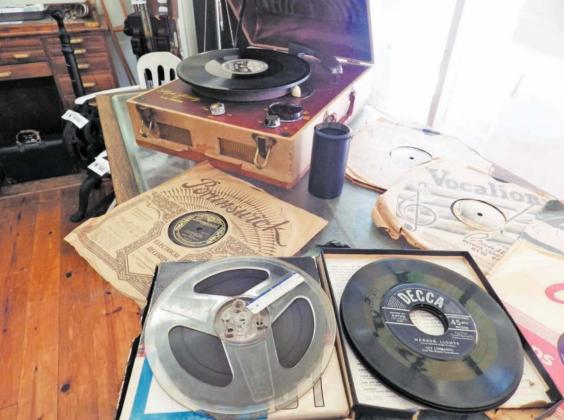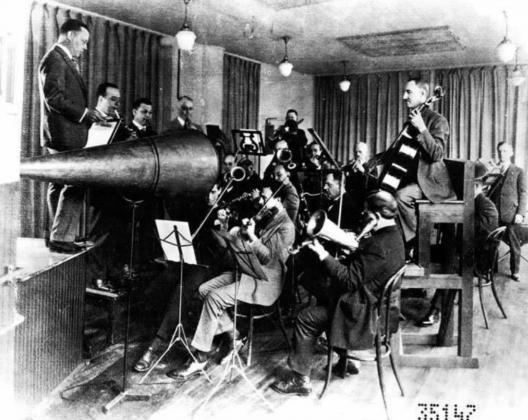From the beginning of recorded sound in 1877 when Edison created his first phonograph, attempts have been made to make life like sound recordings. Early recordings were made by having a band and singer perform into a huge funnel shaped metal cone that had a thin diaphragm and a needle in the apex. As the needle would vibrate with the sound it would make waves in a spinning platter of wax. That wax would eventually be used to press the records.
But these recordings weren’t very good. These acoustic methods recorded a narrow range of sound frequencies from about 250 to 2000 cycles per second. That meant that the original recording at best sounded like a telephone.
But by the 1920s new electronics were starting to become available. WFAA and WBAP radio stations went on the air in 1922. During this time people were able to buy electronic radios because the tubes and other components were becoming available at reasonable costs.
By 1925 better microphones and tube amplifiers were also becoming available. These were used in a new type of electronic recordings. Now instead of a band playing into a funnel, they would play into a microphone. The sound would be amplified and sent to a recording lathe that would record the better quality sound onto the wax platter.
We have several 78 rpm records at the Dublin Historical Museum that tell about this new electronic recording process. One was the Marconi process that was common in Europe. Also the Brunswick method that was available in London and here in the US. All the well known brands joined this new recording process, including Decca, RCA Victor, Columbia, and Capital Records.
Finally the full frequencies of sound could be recorded. 78 rpm records had their own snap, crackle, pop since the record itself less than ideal. Years later these shellac records would be replaced with vinyl (a method pioneered by Columbia Records) and much of the background noise would be eliminated.
Early record players would only play one record at a time and then the operator would have to change the record. Someone got the idea of a mechanical record changer. Now the family could have dinner with music and no one would have to jump up to change the record every 3 minutes. As time passed, more record players came with these changers.
Starting in the late 1930s and into the 1950s records were sold in bundles that they called albums that had groups of records that were meant to be played all together. These were sold in folders or boxes. This form of record albums were sold before the better known 33 1/3 albums became available. These were sold in the 45 rpm format and the 78 rpm format.
The idea of stereo sound was first developed during the late 1930s and 40s. In 1941 before World War II some multi-track recordings were made with Glenn Miller. MGM studios recorded the orchestra on film sound. These film recordings were remixed many years later into stereo recordings. Stereo 33 1/3 records became available in the late 1950s making the stereo sound available in the home.
How were they able to get two discrete channels of stereo sound out of a single needle? That took some amazing engineering, and may be a topic of a future Museum Matters.


